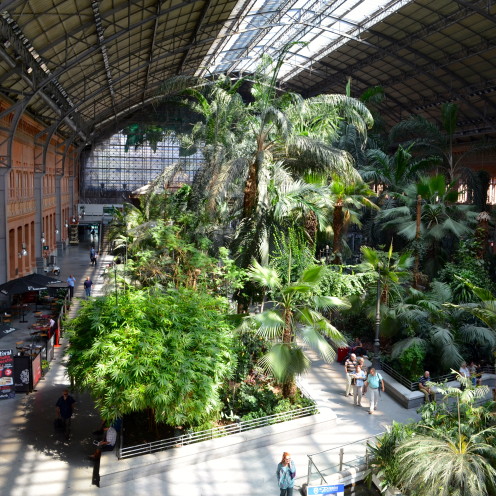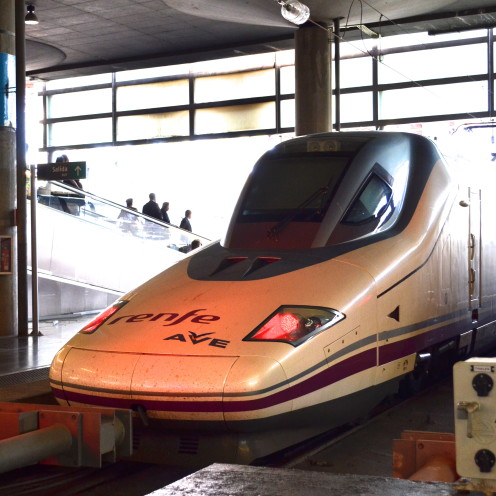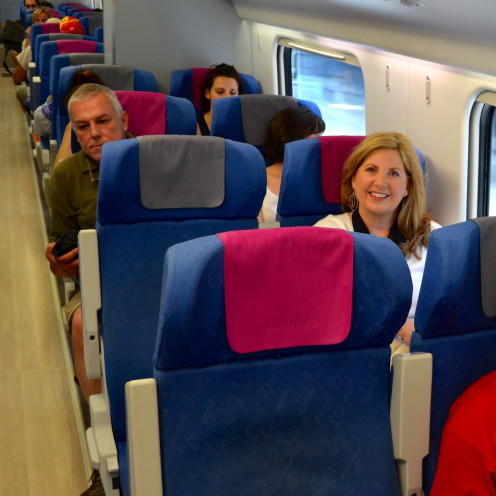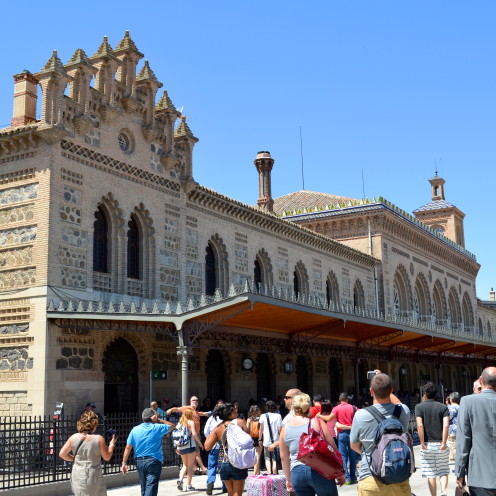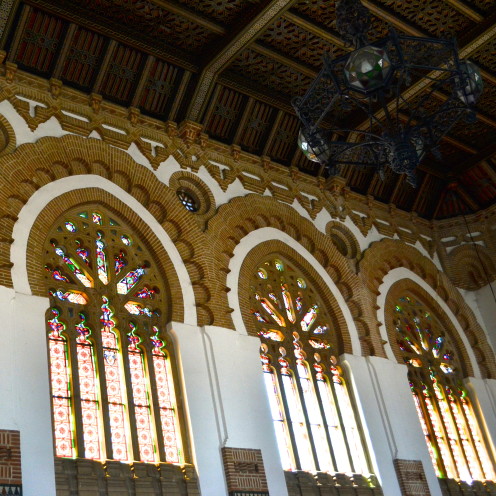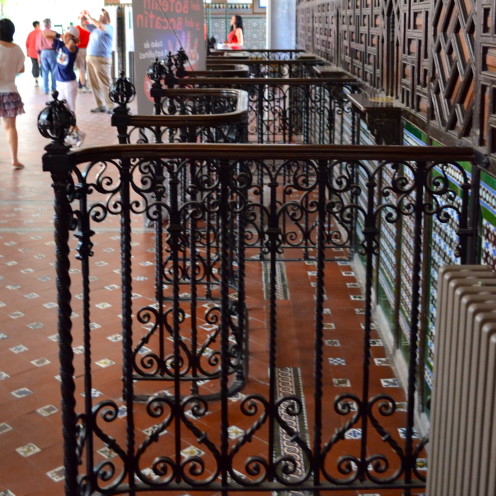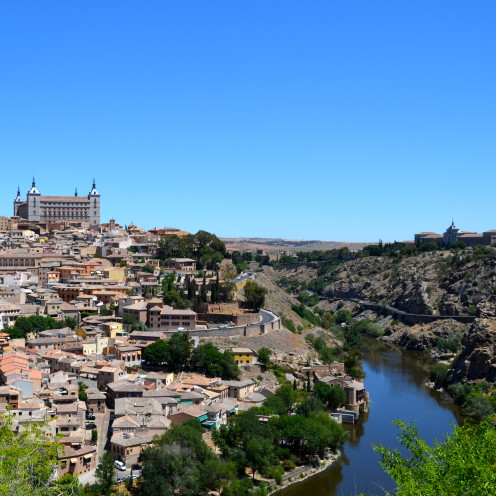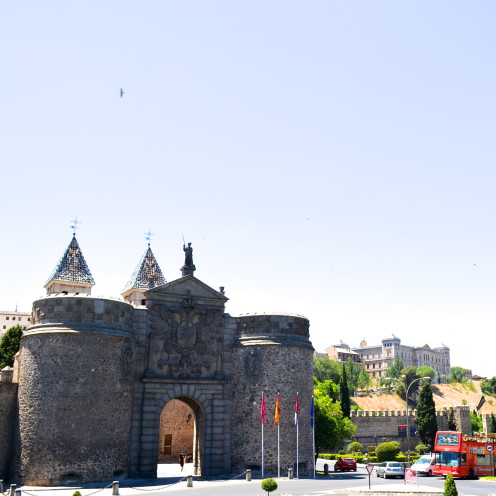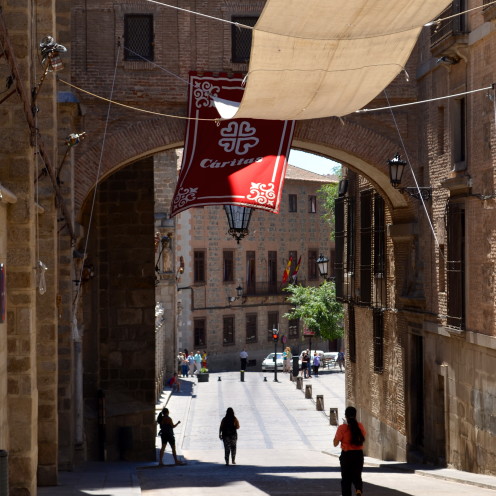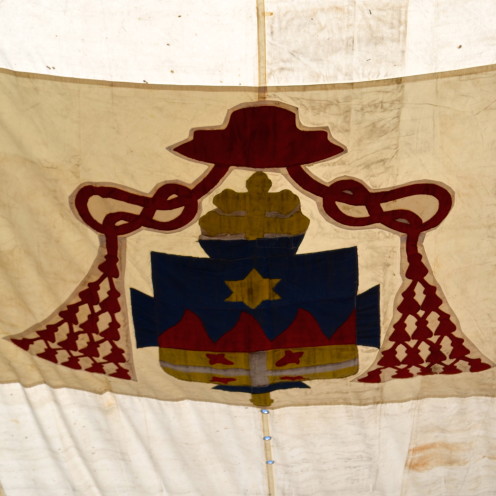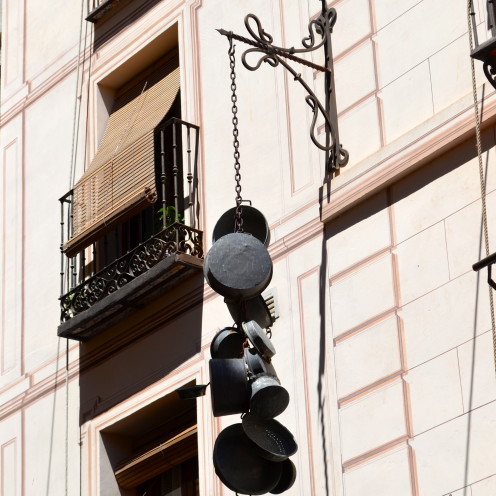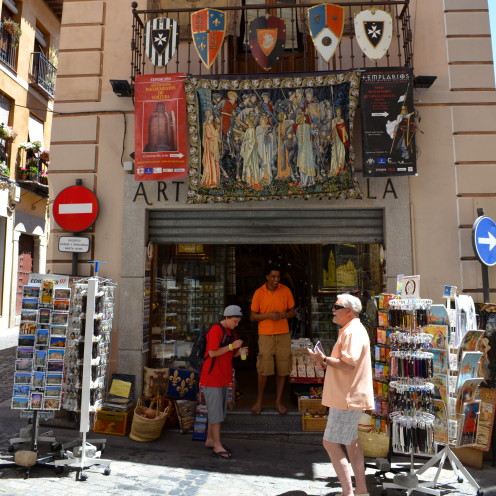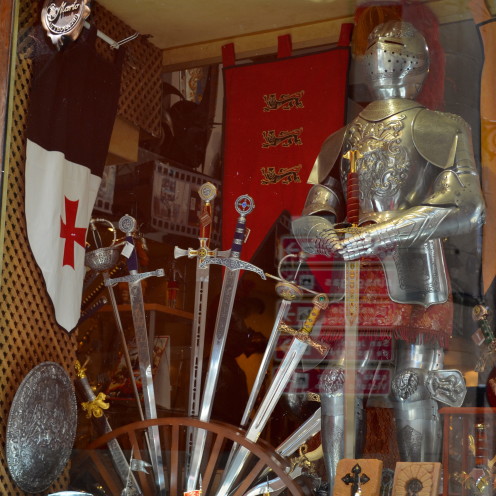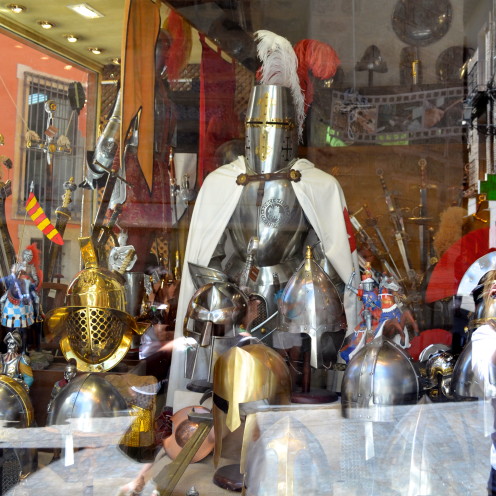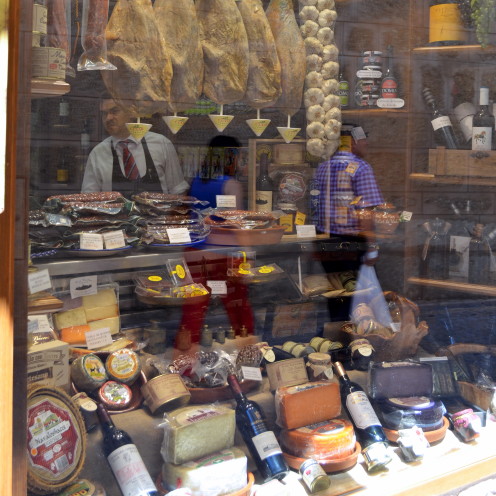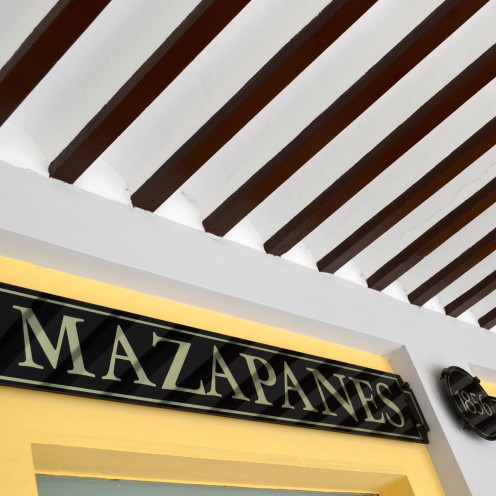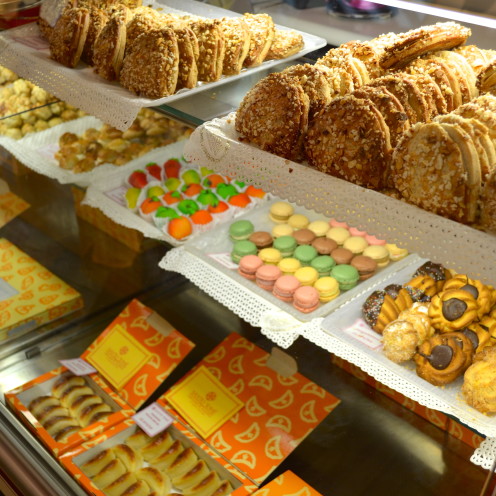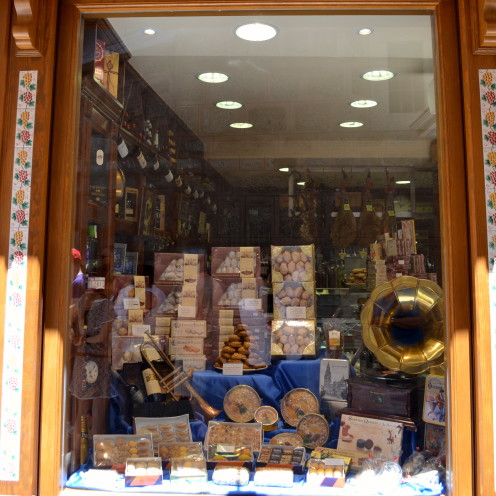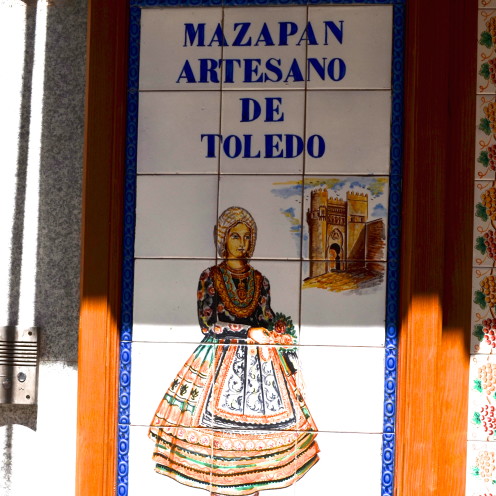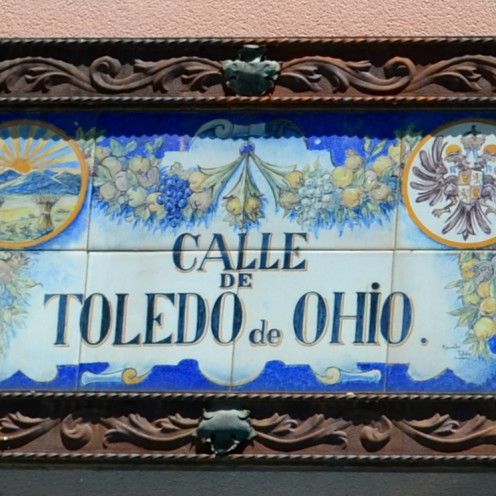A VISIT TO THE ANCIENT WALLED CITY OF TOLEDO, SPAIN
A VISIT TO THE ANCIENT WALLED CITY OF TOLEDO, SPAIN
When people ask me for advice about where to go in Spain, I always say, “Start in Madrid.” Madrid is centrally located geographically in the center of Spain and is a major airline hub. But more importantly, beyond the attractions and beauty of Madrid is the fact that it is within a short high-speed train ride or lovely scenic drive to many of Spain’s most interesting and beautiful cities. So, one can make Madrid a hub and take satellite trips to wonderful towns such as Toledo.
On this particular trip to Spain we had little time to explore the wonderful cities on the outskirts of Madrid. In fact, we had only one day for a day-trip, so we settled on a visit to Toledo, a former capital of Spain. Toledo is one of the most visited cities in all of Spain and is located in the Castille region, just 42 miles away from the cosmopolitan riches of Madrid. We opted to take the AVE high-speed train which takes 33 minutes from Madrid’s Atocha station to Toledo.
Madrid’s Atocha Train Station is like a botanical garden.
It even features a duck pond, of all things.
The train to Toledo departs every hour on the half-hour and is clean and comfortable. This was our train. Does it look like a snake’s head to you? Just sayin’.
For a kid who grew up in Southern California where public transportation was unheard of, riding a high-speed train was a fun and unique experience and beats bumper-to-bumper traffic any day. Even though I just couldn’t get the snake’s head out of my mind.
Thirty minutes later we arrived at the Toledo train station, which was built in the 1920’s (that’s a really new building by Spanish standards) in what is known as the Mudejar architectural style. Are you impressed with my architectural savvy? Actually, I was impressed with this beautiful building and its unusual style so I looked it up:)
Who knew a train station could be so beautiful, complete with marvelous stained glass windows. It almost looked more like a cathedral.
It was so attractive, I decided I wouldn’t mind if my train back to Madrid later in the day was late, just so I’d have more time to admire the intricate iron chandeliers and ceiling details.
I’m not sure what these beautiful iron railings were used for but they sure were lovely. I admired the beautiful tile floors as well. Inside this lovely station, we were greated by a company that offers air conditioned bus tours around the city. Because our time was short, we decided this would be the most advantageous way to see a lot of Toledo in a short period of time. The Toledo train station is located on the outskirts of the city and requires some form of transportation to get oneself to the ancient walled city.
Toledo sits majestically above the the Tagus River.
The Tagus River acts almost like a protective moat around the city. If unlike us you have more than a day to devote to your visit to Toledo, I recommend staying the night at the Toledo Parador (Parador Nacional de Turismo), situated on the neighbouring Emperador Hill. The Parador, while not located in the walled city, has a wonderful view of Toledo. I have stayed there several times on previous visits and always prefer the Spanish Parador Hotels over any others.
Sitting on the highest part of Toledo is the Alcázar of Toledo, originally built as a Roman fortification in the 3rd century. In 1521, Hernán Cortés, the Spanish explorer and conquerer of Mexico, was received by Charles I (the Holy Roman Emperor at the time) at the Alcázar, following Cortes’ conquest of Montezuma and his Aztec Empire. Hernán Cortés was a bit of a bad guy, overthrowing the greatest civilization in the world at that time. Even so he holds a special place in my heart because he went on to discover California, where yours truly was born. Think about that for a moment. That building at the top of the hill in Toledo, Spain was first erected (and later destroyed and rebuilt in the 1500’s) about 1,200 years before Columbus discovered America or Cortés discovered my native California!
This is the Puerta de Bisagra. Built in the 10th century, it was once the principal gateway into the ancient walled city of Toledo. Toledo is unique in the fact that its old wall encapsulates the city within and thus has preserved it like few cities in the world. What makes Toledo particularly unique is that while many Spanish cities have their historic quarters, Toledo has not been swallowed up by a modern city around it.
We visited Toledo in July when the temperatures are very hot and uncomfortable. Our airconditioned bus was a comfortable escape from the heat. But the ancient narrow streets of Toledo don’t lend themselves to bus traffic so once we reached the main city square our tour continued on foot.
The whole of Toledo is a historic district and has been designated a Unesco World Heritage Site. Toledo is a magical place, probably one of the most spectacular cities in the world, and for this reason I always recommend that visitors to Spain include a visit to Toledo. The city feels like a living museum and easily transport visitors to a different era. As we walked along these tourist-packed streets I kept reminding myself that these buildings and these quaint and narrow winding streets hold hundreds of years of history.
A unique feature of the city is the installation of canvas canopies suspended over the city streets.
Not only did these canopies provide some protection from the hot summer sun, they were also lovely to look at……
…..decorated with elaborate emblems and crests.
We explored the narrow cobbled streets with buildings festoned with flower pots and beautiful ironwork.
I was taken by this building which had a collection of iron pots and pans suspended from it.
Of course shopping is a favorite passtime. We stopped in here for some postcards, an ice cream for Austin and lively conversation with the friendly shopkeeeper.
The metal-working industry has historically been the basis of Toledo’s economy, with a great tradition in the manufacturing of very fine swords, armour and knives.
Famed for its very high quality steel alloy, Toledo has been a sword-making, steel-working center since 500 BC. In ancient Roman times it was a major source of weaponry and armory for the Roman Legions. As you can see in the photo of this shop window, that tradition lives on today.
My husband Brad decided this knight-in-shining-armour needed sunglasses.
The city of Toledo and the surrounding region of La Mancha is also famous for its production of Queso Manchego, or as we say it, Manchego Cheese. It is made from the milk of sheep of the Manchega breed or as it’s called in Spanish, the Entrefino breed. The inedible rind of Queso Manchego is marked by a distinctive and traditional herringbone basket weave pattern pressed onto it.
Queso Manchego is probably the most famous Spanish cheese. I buy it at my local Costco. Queso Manchego is protected under the European Union’s “Denominación of Origen.” Translated that means “The Denomination of Origin.” This is a fancy regulatory classification system that insures that all cheese named Manhego is made only with whole milk obtained from sheep of the Manchego breed, that are raised on registered farms, located within the designated area of La Mancha, Spain. Ya got that? In other words, the cheese I buy at Costco is the real deal, imported from Spain and made from the milk of pretty little sheep that also call Toledo, Spain home. Knowing this little factoid I did not purchase any of the lovely cheese found in these lovely Toledo stores, although I was very tempted.
The Toledo and La Mancha regions of Spain are also famous for the production of a typical almond sweet known as Mazapán. Do not confuse this Spanish confection with the almond paste called “Marzipan.” That would not make my Spanish Grandmother happy!
Mazapán is glazed and is sometimes decorated with pine nuts (piñones).
In all of Spain, the most famous bakery making this sweet is arguably the Confiteria Santo Tomé , located in the Plaza Zocodover.
So, naturally, I would not consider a visit to Toledo complete without a visit to this wonderful institution. In this case I did leave several euros behind with Santo Tomé.
In fact, people come to Toledo from all over Spain to buy Mazapán for their Christmas parties. Word to the wise, don’t visit at Christmas time when the lines to the Confiteria Santo Tomé are longer than at the Vatican.
And just so you know, Confiteria Santo Tomé is not the only Mazapán game in town.
There are lots of other Mazapán establishments to tempt one’s sweettooth.
If you are from Ohio, you might know that Toledo, Ohio and Toledo, Spain enjoy the distinction of being the oldest formally recognized sister-city relationship in the world. Toledo named a street after their sister city and I could not resist taking a photo of the street sign, as my maternal Grandfather was born in Toledo, Ohio. His daughter, my mother, married my dad when he was a fresh-off-the-boat Spanish immigrant. So, both Toledo, Ohio and Toledo, Spain hold special significance to my family.
HOLY TOLEDO! That was a long post. But there is a great deal to see in Toledo and you really can’t do it justice in the one short day we had to spend on this particular trip to Spain. However, we could not leave town without a visit to the Gothic Cathedral of Toledo. Click here for a post about the very beautiful and important Cathedral.
Adios for now.
Have you visited Toledo, Spain? What was your favorite experience there? Did you eat Mazapán and Manchego cheese and dress up knights in shining armour?
So there you have it: A VISIT TO THE ANCIENT WALLED CITY OF TOLEDO, SPAIN
All expressed in this post are my own. All photos are the original property of Celia Becker @ www.AfterOrangeCounty.com and may not be reproduced without specific permission.
